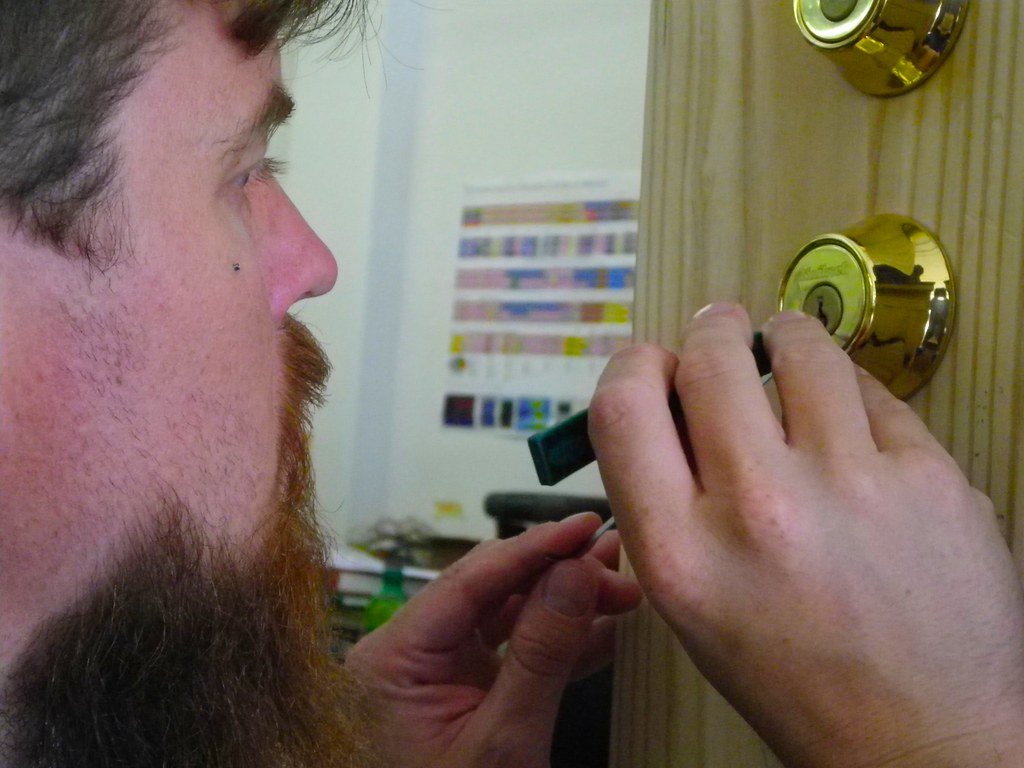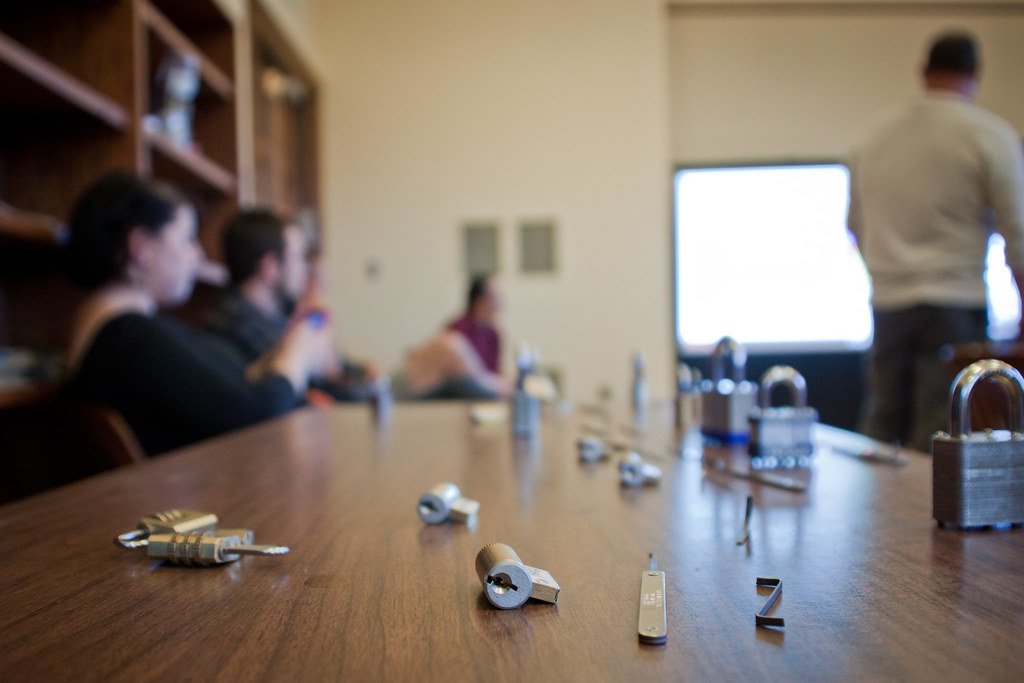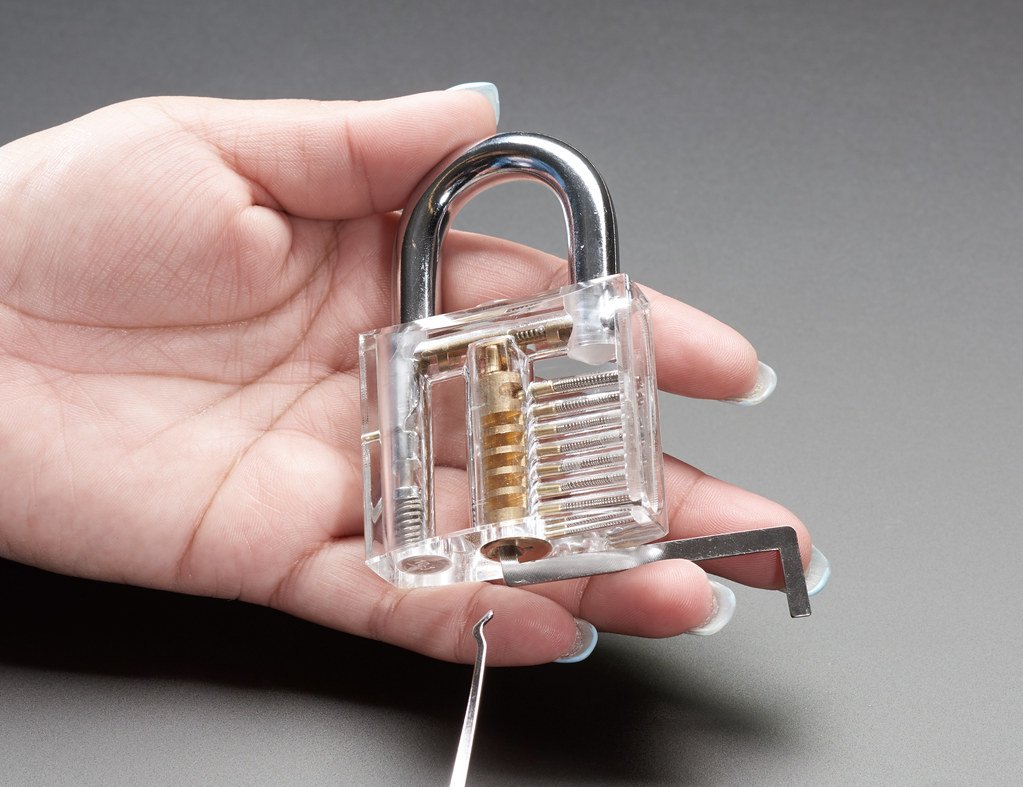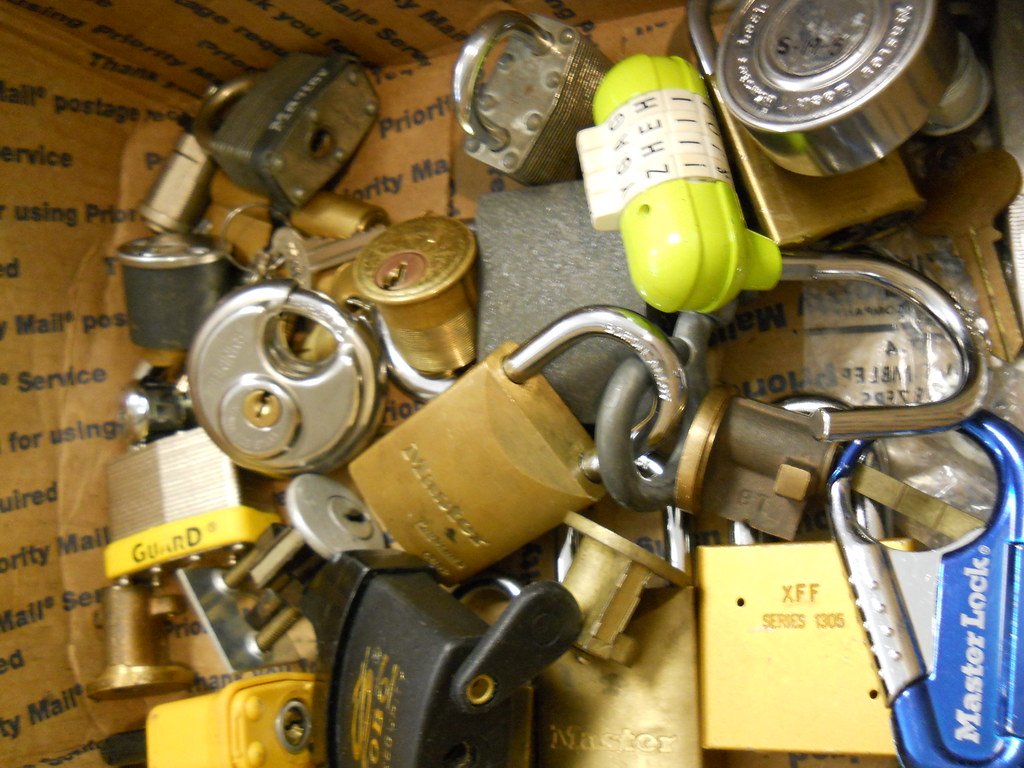Picture this: your child, armed with a mini toolkit, carefully examines a padlock, their eyes gleaming with curiosity and determination. As they deftly maneuver a set of picks and tension wrenches, you marvel at their growing skill and dexterity. Welcome to the world of locksport for kids, a thrilling and educational hobby that challenges young minds while instilling valuable problem-solving and analytical skills. In this parent’s guide, we will explore the wonders of locksport, uncover how it can benefit your child’s cognitive development, and address the concerns that may arise when introducing them to this captivating realm. So, grab your toolkit, unlock your curiosity, and join us on this exciting journey as we delve into locksport for kids.
Table of Contents
- Introducing Locksport for Kids: A Fun and Educational Hobby
- The Benefits of Locksport for Children: Developing Skills and Boosting Confidence
- Choosing the Right Locksport Tools and Equipment for Kids
- Safety First: Teaching Responsible Locksport Practices for Children
- Encouraging Creativity and Problem-Solving Through Locksport
- Q&A
- To Wrap It Up

Introducing Locksport for Kids: A Fun and Educational Hobby
Locksport for Kids is a captivating and educational hobby that combines fun and learning. It is an innovative way to introduce children to the fascinating world of locks and keys. Through hands-on experiences, children can develop problem-solving skills, enhance their fine motor abilities, and boost their critical thinking prowess.
In this exciting journey, children will learn the basics of lock mechanisms and how they function. They will explore various types of locks, such as padlocks, combination locks, and even more intricate ones like pin tumbler locks. By understanding the inner workings of locks, kids can experience the thrill of successfully picking a lock and gaining access.
As an added benefit, Locksport for Kids promotes ethical behavior and responsible use of knowledge. Children are taught the importance of using their newfound skills with integrity and never for harmful purposes. With an emphasis on safety and respect for others’ property, this hobby instills a sense of responsibility and trustworthy behavior in children.
Why wait? Join us on this exciting adventure as we unlock the world of Locksport for Kids, offering countless opportunities for growth, development, and loads of fun!
The Benefits of Locksport for Children: Developing Skills and Boosting Confidence
Locksport, also known as the sport of lock picking, may seem like an unlikely hobby for children, but it offers numerous benefits that can greatly contribute to their overall development. Engaging in locksport not only teaches children valuable skills, but also boosts their confidence in a unique and exciting way.
One of the key advantages of locksport for children is the development of problem-solving skills. By manipulating various locks and mechanisms, children learn to think critically and find innovative solutions to unlock the puzzles before them. This not only sharpens their minds but also fosters their ability to approach challenges with creativity and resourcefulness.
Furthermore, participating in locksport helps children enhance their fine motor skills and hand-eye coordination. Maneuvering lock picks and tools requires precision and dexterity, enabling children to refine their motor skills while enjoying a hands-on activity. As they improve their techniques, they develop a sense of accomplishment, which contributes to a boost in their self-esteem and confidence.
Another advantage lies in the ability of locksport to foster patience and perseverance. As children discover that picking a lock requires time and practice, they develop patience and learn that success often comes as a result of consistent effort. This valuable lesson teaches children the importance of persistence and helps them build resilience, qualities that will be beneficial to them throughout their lives.
In conclusion, locksport offers children a range of valuable benefits, including the development of problem-solving skills, enhancement of fine motor skills, and the opportunity to cultivate patience and persistence. By engaging in this unique sport, children not only acquire practical abilities but also gain a boost in their confidence and self-belief. So let’s encourage children to explore the world of locksport and unlock their true potential!
Choosing the Right Locksport Tools and Equipment for Kids
When it comes to introducing children to the world of locksport, it’s essential to provide them with the right tools and equipment that are suitable for their age and skill level. Here are some tips to help you choose the perfect tools for your little lock enthusiasts:
- Lock Pick Sets: Look for lock pick sets specifically designed for kids, which feature smaller and lighter tools that are easier for their little hands to manipulate. These sets often come with transparent practice locks that allow children to see how the different mechanisms work.
- Practice Locks: Opt for practice locks that offer various difficulty levels, allowing kids to progress at their own pace. Starting with simple pin tumbler locks and gradually moving towards more complex locks will help them build their skills without frustration.
- Safety Precautions: Always prioritize safety when selecting locksport tools for kids. Consider tools that have rounded edges to prevent accidental injuries. Additionally, provide proper supervision and guidance while they are practicing to ensure they understand the importance of responsible lock picking.
Remember, the goal is to foster their curiosity and teach them confidence, patience, and problem-solving skills through the world of locksport. By choosing the right tools and equipment, you can set your kids up for an enjoyable and educational locksport experience!

Safety First: Teaching Responsible Locksport Practices for Children
Teaching children about locksport can be an exciting and educational experience. It instills problem-solving skills, promotes hand-eye coordination, and encourages creativity. However, it’s essential to prioritize safety throughout the learning process. By implementing responsible locksport practices, children can engage in this hobby safely and responsibly.
Here are some key guidelines to ensure the safety of young locksport enthusiasts:
- Always supervise: It is crucial to closely supervise children while they practice locksport. This ensures they handle the tools safely and prevents any mishaps.
- Use age-appropriate tools: Provide children with lockpick tools suitable for their age and skill level. Avoid giving them tools that may be too complex or potentially dangerous for their abilities.
- Explain the ethical aspect: Teach children about the importance of using their lockpicking skills responsibly and ethically. Emphasize that locksport is meant for educational purposes and should never be used for unlawful activities.
- Encourage open communication: Foster an environment where children feel comfortable discussing their locksport experiences. This enables them to seek guidance, share concerns, and further enhance their understanding of responsible locksport practices.
By emphasizing safety and responsibility, children can enjoy the educational benefits of locksport while promoting a positive and ethical approach to this captivating hobby.
Encouraging Creativity and Problem-Solving Through Locksport
Locksport, often seen as a niche hobby, holds immense potential for encouraging creativity and problem-solving skills. Beyond simply picking locks, this unique practice prompts individuals to think outside the box, innovate, and develop a deep understanding of mechanisms. Through engaging with this captivating pursuit, enthusiasts can enhance their cognitive abilities while fostering a creative mindset.
Locksport involves deciphering and manipulating intricate mechanisms to unlock various locks. This process demands a combination of analytical thinking, critical reasoning, and manual dexterity. Participants are challenged to scrutinize the inner workings of different locking systems, honing their attention to detail and strategic planning. They must also exercise patience and persistence in overcoming obstacles—a testament to the resilience and problem-solving skills nurtured within this community.
By engaging in locksport, individuals are not only cultivating their technical skills but also developing a broader creative mindset. The process of exploring and understanding lock mechanisms pushes enthusiasts to think imaginatively, seeking unconventional solutions to seemingly insurmountable challenges. This fosters innovation and opens doors to new perspectives—qualities that transcend the confines of locksport and can be applied to various aspects of life.
Q&A
What is locksport for kids?
Locksport for kids is an engaging and educational hobby that involves learning the skills and techniques of lock picking and manipulation. It promotes problem-solving, critical thinking, and a better understanding of how locks work.
Is lockpicking safe for children?
When taught and supervised properly, lockpicking can be safe for children. It is essential for parents to provide guidance, ensure a responsible environment, and emphasize the importance of using their newfound skills ethically and legally.
At what age can children start learning locksport?
The appropriate age for children to start learning locksport will depend on their maturity level and the guidance provided by their parents or guardians. Generally, children around the age of ten or older can begin to grasp the concepts and techniques involved.
What are the benefits of locksport for kids?
Locksport offers numerous benefits to kids. It helps enhance fine motor skills, problem-solving abilities, and patience. Additionally, it fosters a sense of accomplishment and confidence when children successfully pick locks or solve lock puzzles.
How can I introduce my child to locksport?
To introduce your child to locksport, you can start with beginner lock pick sets or lock puzzle toys specifically designed for kids. Supervise their progress, encourage curiosity, and provide them with educational resources to support their learning journey.
Are there ethical considerations to be aware of?
Absolutely! It’s important to emphasize the ethical aspects of locksport to children. Teach them responsible use of their skills and emphasize that lockpicking should only be done with permission or in emergency situations. Encouraging ethical behavior is vital for fostering a safe and legal locksport community.
Can locksport help prevent break-ins?
While locksport teaches kids how locks work and how they can be manipulated, it does not encourage or support illegal activities. The aim of locksport is to understand the mechanisms for educational and recreational purposes only, helping kids develop skills and knowledge.
What precautions should parents take?
Parents should ensure that locksport activities are supervised and take place in a safe environment. Make sure to emphasize the importance of using lockpicking skills responsibly and legally. Additionally, store lock picks securely to prevent unauthorized access.
What are some resources for learning more about locksport?
There are excellent resources available online, including tutorials, forums, and books, that provide valuable information about locksport for kids. Websites such as locksport.org and books like “Lockpicking for Kids” by Jalal Kassab are great starting points to enhance your child’s locksport knowledge.
To Wrap It Up
As we bring this comprehensive guide on Locksport for Kids to a close, we hope that it has provided you, dear parents, with valuable insights into this unique and captivating hobby. From understanding the benefits it offers to ensuring its safe and responsible practice, we have embarked on a journey of discovery together.
Remember, Locksport is more than just a skill; it is an opportunity to nurture your child’s curiosity, problem-solving abilities, and patience in a thrilling and controlled setting. By fostering an environment of support and guidance, you can empower them to embrace the world of locks and keys with confidence.
As you navigate this path alongside your little enthusiasts, you mustn’t overlook the importance of open communication and constant supervision. Like any endeavor, Locksport requires vigilance to maintain the safety and ethical values it upholds. Encourage them to participate in local Locksport communities and events, where they can engage with like-minded individuals who share their passion.
As parents, we understand your concerns about privacy and security. Remember, teaching your child Locksport isn’t about steering them towards illegal activities, but rather about providing them with knowledge that empowers them to be better equipped when it comes to personal security. It is an opportunity for them to appreciate and respect the intricate mechanics behind the locks that safeguard our everyday lives.
As our young ones discover the world of Locksport, let us marvel at the enthusiasm they exude. Let us nurture their inquisitive minds and encourage them to pursue this hobby with integrity and responsibility. And who knows, your child’s fascination with locks today might just lay the foundation for a future locksmith, engineer, or security expert!
In conclusion, Locksport for Kids is a journey that invites us to explore this fascinating realm alongside our children. It encourages growth, promotes critical thinking, and instills a sense of responsibility. By embracing this hobby with open arms, we are providing our young ones with the key to unlocking a world of opportunities.
So go forth, dear parents, and let your children’s imaginations soar as they embark on their Locksport adventure. With your guidance and support, they will not only develop a practical skill but also unlock the door to a world filled with endless possibilities.
As an affiliate, my content may feature links to products I personally use and recommend. By taking action, like subscribing or making a purchase, you’ll be supporting my work and fueling my taco cravings at the same time. Win-win, right?
Want to read more? Check out our Affiliate Disclosure page.